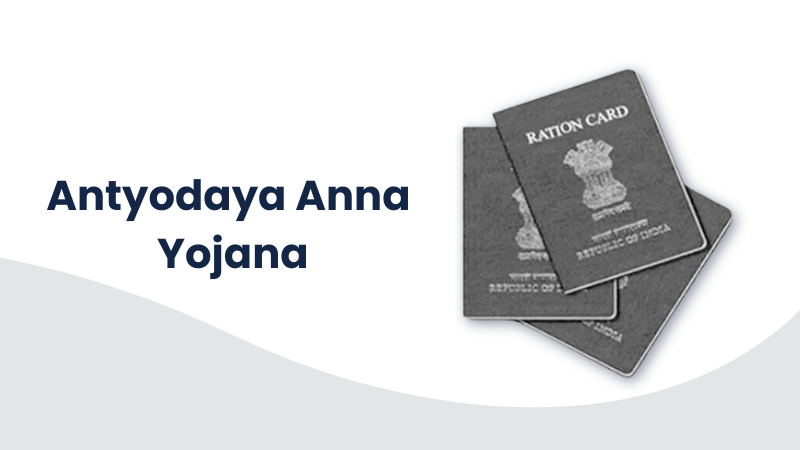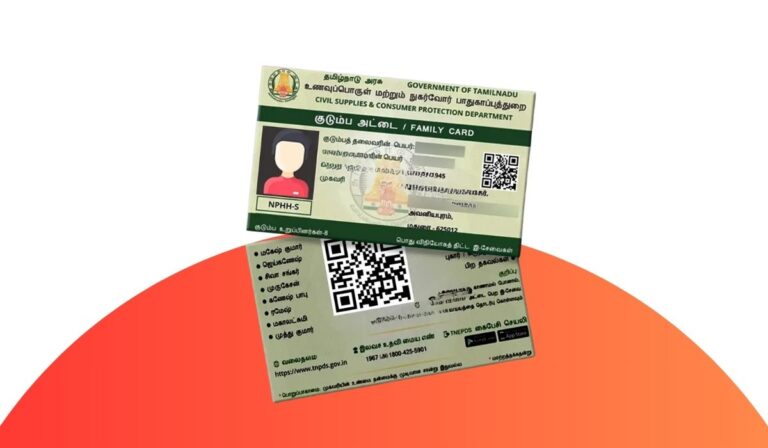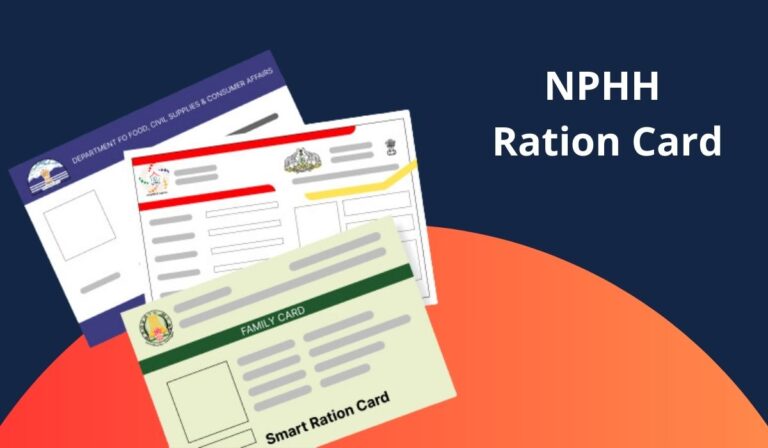Antyodaya Anna Yojana is a government-sponsored programme that was introduced by N Sri Vishnu with the idea of offering food at low prices, thus addressing the hunger of the poorest families. The scheme was introduced in the year 2000 by the Indian state of Rajasthan. Under this scheme, the families below BPL are given 35 kg of food grains each month. As per Antyodaya Anna Yojana, the families become eligible for getting food grains like rice at Rs 3 per kg and wheat at the rate of Rs 2 per kg.
What is the Antyodaya Anna Yojana (AAY) Ration Card?
The Antyodaya Anna Yojana (AAY) Ration Card is a new initiative by the Indian government to provide crucial food assistance to the country’s poorest and most vulnerable families. The Antyodaya Anna Yojana aims to identify and support one crore of the most economically deprived families within the Below Poverty Line (BPL) category, as enlisted in each state’s Targeted Public Distribution System (TPDS). The initiative entails offering rice and wheat to these identified families at significantly subsidized rates.
AAY Ration Card operates under the broader framework of the National Food Security Act (NFSA). AAY Ration card is an essential card that work for a focused and inclusive approach. AAY Ration card not only provides food assistance but also helps provide better assistance to the marginalised society of the country. The cardholders receive a specific quantity of subsidized food grains per month based on family size and composition. The colours of these cards often differ from regular ration cards, making them easily identifiable.
Importance of AAY Card
The AAY card is necessary for addressing severe poverty and hunger in India. It ensures food security for the most economically class by providing highly subsidized essential grains. The ration card is mostly made for targeted people such as widows, disputed families, and persons with disabilities. AAY Card is launched to empower the marginalised society and remove poverty from the country.
Objectives of Antyodaya Anna Yojana
- Removing poverty in a country
- Amplifying the popularity and effectiveness of TPDS (Targeted Public Distribution System).
- Implementing subsidized pricing strategies for staple food items.
- Advancing food security initiatives for India’s Below Poverty Line (BPL) population.
- Utilizing government funds to cover distributing and transporting food grains.
Essential Features of AAY Ration Card
- AAY ration cardholders receive essential food grains at significantly subsidized rates, ensuring access to affordable nutrition.
- The scheme prioritises the “poorest of the poor,” including destitute families, widows, homeless individuals, and households with persons with disabilities.
- The cardholders receive a specific quantity of subsidized food grains per month, determined based on family size and composition.
- AAY ration cards often have a distinct colour code, making it easier to identify and differentiate from other categories of ration cards.
Benefits of the Antyodaya Anna Yojana Scheme
- AAY ensures food security for the poorest families by providing them with essential food grains at highly subsidised rates. This helps in addressing hunger and malnutrition among economically weakened households.
- Beneficiaries under the AAY scheme receive food grains at highly subsidised rates, including wheat and rice. This helps them access affordable staple foods, reducing the financial burden on these families.
- The scheme contributes to nutritional support for vulnerable populations, including pregnant women, lactating mothers, and young children. Adequate nutrition is crucial for individuals’ overall health and development, especially in economically challenged households.
- AAY follows an inclusive approach by prioritising destitute families, widows, homeless individuals, and households with persons with disabilities. This ensures that those facing the most severe economic hardships receive assistance.
- By addressing the basic need for food, the AAY scheme plays a role in alleviating poverty, focusing on those who are most economically vulnerable and lack regular means of subsistence.
Documents Required for the AAY Scheme
Essential documents needed for the AAY scheme:
- Certification proving Below Poverty Line (BPL) status
- Documentation verifying income
- A certificate of cancellation or an affidavit confirming the applicant has not possessed a ration card before
Eligibility Criteria for Antyodaya Ration Card
Those families who qualify for the following eligibility criteria will be considered for the Antyodaya Ration Card:
- A person possessing any physical or mental disability will be eligible for the AAY card.
- Citizens who have attained the age of 60 years or older can apply for the AAY card.
- Those families whose annual income is more than Rs 15,000 are eligible for the AAY.
- The family of the beneficiaries must be below the poverty line.
- This program provides support to every tribal community in rural and areas, especially those that are considered primitive.
- Applicants who belong to the widow category can apply for this scheme.
AAY Beneficiaries: Targeted Families for Antyodaya Anna Yojana Ration Card
The major aim of launching the AAY card was to offer ration to poor families at a subsidised rate. The state government identifies poor families based on their monthly or annual income. Here are some major targeted categories for the Antyodaya Anna Yojana Ration card:
- AAY aims to support the most vulnerable families in the marginalised sections of society. Most of the beneficiaries of the Antyodaya Anna Yojana are homeless individuals, destitute families, widows, and those suffering from physical disabilities.
- People who are senior citizens or have attained 60 years of age are also eligible for the Antyodaya Anna Yojana Ration card.
- AAY ration cards are often issued to tribal families, terminally ill or whose annual income is not more than Rs 15,000. These families are entitled to receive a specified quantity of food grains at a highly subsidized rate under the National Food Security Act.
How to Apply for the Antyodaya Anna Yojana Scheme?
Follow the provided steps to submit an online application for the Antyodaya Anna Yojana:
- Step 1: Visit the official website of Antyodaya Anna Yojana and choose the option ‘Apply for a new ration card.’
- Step 2: Access the ‘State / UT food portals list.’ Select the relevant state and fill in the ‘Pradhan Mantri Garib Kalyan Anna Yojana 2025 application form’ with your details.
- Step 3: Upon completion, click the ‘Submit’ button to finalize the submission of your application.
Steps to Apply for the Antyodaya Anna Yojana Scheme Offline
Here are the steps to apply for the Antyodaya Anna Yojana offline:
- Step 1: Visit the Department of Urban Development to initiate the application process.
- Step 2: The State Government or Union Territory (UT) Offices will identify impoverished families within the Below Poverty Line (BPL) category through comprehensive research.
- Step 3: Check out the list of identified families at the Village Council, Panchayat, or Municipality.
- Step 4: The Office of Revenue compiles a provisional list of eligible families.
- Step 5: Notify the approved families during a Gram Sabha session.
- Step 6: In urban areas, Chief Executives select suitable beneficiaries. Once identified, designated authorities issue the approved families an Antyodaya Anna Yojana (AAY) card.
What is the colour of the Antyodaya Anna Yojana ration card?
The state government determines the colour of Antyodaya Anna Yojana. For instance, the card’s colour in Kerala is Yellow but the same in Telangana is Pink. The beneficiaries can use the card to procure ration at subsidised prices.
FAQs
1.What is the full form of AAY?
The AAY full form is Antyodaya Anna Yojana.
2. How does Antyodaya Anna Yojana help the marginalized section of society?
The scheme uplifts the BPL families by providing them with food and necessities.
3. What is the difference between a regular Ration Card and AAY Ration Card?
The main difference lies in the target beneficiaries. A regular Ration Card is for general households, while the Antyodaya Anna Yojana (AAY) Ration Card is specifically designed for the poorest of the poor, providing them access to highly subsidized food grains to address their unique economic challenges.
4. How are food grains allocated under the AAY scheme?
Under the Antyodaya Anna Yojana (AAY) scheme, each family can receive 35 kilograms of food grains per month.
5. Can anyone apply for an Antyodaya card, or is there specific eligibility?
The Antyodaya Anna Yojana (AAY) will benefit individuals with yearly earnings below Rs. 15,000, residents of slums, street vendors vending fruits and flowers, and individuals engaged in occupations such as rag picking, snake charming, and cobbling.
Also, read:
How to Download E-Ration Card Online?
Ration Card Status: Check Ration Card Application Status Online




